Introduction
Mesa-Falcon Field Airport in Arizona started its operation in1941, at the time it acted as a training base for United States of America pilots and Royal Air Force pilots throughout World War II (Mesaaz.gov, 2009). The airport is devoted to supplying quality air haulage resource and improving the aeronautical business in the society according to its mission statement and has a reputation throughout Arizona as one of the safest and well run airport (Mesaaz.gov, 2009).
The City of Mesa owns and controls the Falcon Field airport; in the United States Falcon Field airport is the busiest common aviation airports and was recently ranked number four in 2009 out of more than eight hundred aviation companies (Mesaaz.gov, 2009). The airport is the trade and industry engine for the society and indirectly supports hundred of businesses and directly employs more than one thousand people in the region thereby generating excess of $2 billion for the city. Projected growth indicates that the expansion of Phoenix Metropolitan region and the City of Mesa will lead to high aviation demand necessitating the airport’s continued growth expansion.
As a planning tool Falcon Field airport prepares a master plan in accordance with demand-based programme which utilizes fundamental management, economic and financial underlying principles for each aspect of its strategic expansion in order to guarantee the viability of its business initiatives. The main objective of the master plan is to generate a long term expansion program that is secure, efficient, cost-effective and sustainable in the industry of the aviation (Mesaaz.gov, 2009). The execution of the project is done according to the requirement, purpose and demand of the business project.
These projects are usually grouped according to their duration such as short term, intermediate and long term projects which are also financed from a range of various funds such as the federal and country levels grants (Mesaaz.gov, 2009).
The City of Mesa collects revenue from various sources so as to fund the airport’s operations; the revenues are allocated through the various financial programs that are owned and run within the City of Mesa. The city activities are divided into two; business type activities and governmental activities; the taxes and general revenues for instance are used to support the governmental activities such as public safety, community environment, general administration, and cultural recreation (Messaz.gov, 2009). The private sector taxes on the other hand comes from collection of water charges, gas charges, golf courses fees and sewerage charges among others (Messaz.gov, 2009). Additionally, the City of Mesa keeps two kind of proprietary funds; the internal service funds and enterprise funds. The enterprise fund summarizes the business sector activities in the financial statements of the government which will mean that Falcon airport will be accounted in the enterprise fund as one of the proprietary fund (Messaz.gov, 2009).
Planning criteria
The airport uses the aircraft design to determine how to plan its airport services; the aircraft critical design for instance is used to describe the parameter design for the Falcon Field airport and in determining the airport’s landside and airside components (Messaz.gov, 2009). Based on these criterions the airport does not allow cargo carriers and commercial carriers to use Falcon Field airport because of their huge size given that the Company is trying to utilize on space.
Expenditures
Operational activities
The following figures summarize the financial reports of Mesa city for the year 2009 and 2010.
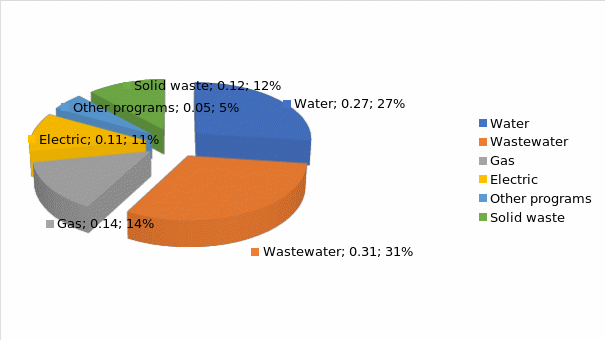
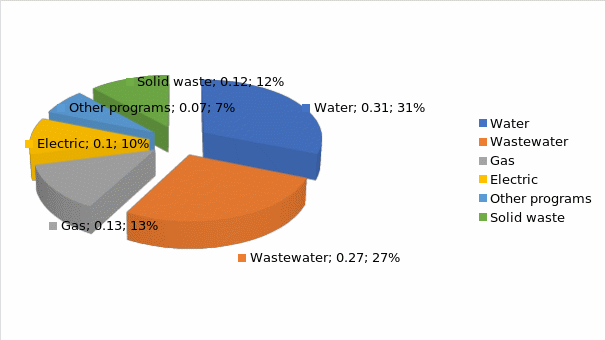
The fiscal 2010, water expenses have increased by 4%, the wastewater has decreased by 4%, gas and electric have both decreased by 1% while other programs have increased by 2% each. The 2% increase in expenses is as a result of the city’s expansion programs and construction of residential buildings such as golf courses, the Falcon Field airport and additional centres that the city has recently been investing on (Messaz.gov, 2009).
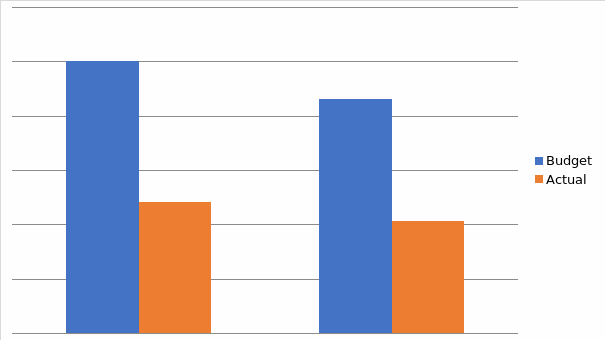
The figure above compares the budget expenses and the actual expenditure that existed in the fiscal years, 2009 and 2010. The estimates were very high but the actual expenses that were incurred during the year were low. But there was a reduction of actual and estimated expenditure in 2010 which implies that the airport management was very efficient or there were no addition of activities in the airport; which led to fewer expenses.
In the fiscal year 2009 the airport amount budgeted for was $10,011,000 while the actual amount was $ 4,807,474; based on these figures the variance in the budget was $5,203,526 ($10,011,000 – $ 4,807,474). While in 2010 the actual spending was $4,143,273 and the budget amount $8,624,000 which means the variance in this year was $4,480,647 ($8,624,000 – $ 4,143,273) (Messaz.gov, 2009).
Capital improvement program
The Capital Improvement Program is organised into two sections; the capital needs program as per the proposed Capital Improvement program (CIP) and the capital improvement finances on the local levels, state and federal (Messaz.gov, 2009). The CIP is planned using Master Plan which is prepared according to demand where the real capital improvement can be compared with demand forecasts; this ensures safety and efficient accommodation of the level of demand as it arises at the Falcon Field airport (Messaz.gov, 2009). The improvements are usually grouped in terms of planning horizon for example long term, intermediate and short term which are implemented based on the priorities of financing on the CIP (Messaz.gov, 2009).
In order to identify capital needs, the planned projects are assessed based on various criterions such as environmental, safety, maintenance, efficiency, demand and opportunities. The short term projects are assessed based on the demand, safety and efficiency capital needs, while intermediate and long term projects are assessed based on safety and development-linked growth (Messaz.gov, 2009).
In this case the long intermediate and short term development plans have a time horizon of 11-20 years, 6-10 years and 0-5 years respectively; the short term estimated total cost is $22.1 million out of which the local financing is estimated at $ 2.5 million (Messaz.gov, 2009). The intermediate term cost estimates equals $17.9 million with inclusion of 15% inflation aspect and a projection of the local share pegged at $773,700 per annum. Finally, the long term total cost estimates is $35.9 million when a 30% interest aspect is added and the estimate for local share at $3.4 million (Messaz.gov, 2009. All the finances for the CIP programs are sourced from state and federal levels through grants, and internal resources of the Falcon field airport (Mesa-Falcon Field airport, 2009).
Revenues
Falcon Field airport does not rely only on the internally generated fund but also from grant programs; the United States legislature acknowledged the need to improve and preserve aviation services system across the United States for the intention of promotion of commerce within the States and strengthening of the nationwide defence (Federalgrantswire.com, 2011). The Airport Improvement Program (AIP) is the latest legislation enacted for that purposes; the Aviation Trust Fund also finances the Vision 100 which is another recent program (Federalgrantswire.com, 2011). That is how the FAA operation is funded by Aviation Trust fund; at the States level, Arizona take part in Falcon Field improvement programs, funded by Arizona Aviation Fund (Federalgrantswire.com, 2011).
The project balance costs are financed through local sources once the grants have been exhausted which means that it does not entirely rely on City of Mesa financing. In any case the airport is a business which means its main objective is to generate enough revenues to cater for all its operating expenses. However, bond issue, leases and Falcon Field airport revenues are some of the alternatives of local funding that the airport relies on for its improvements (Messaz.gov, 2009).
Bonds are issued inform of municipal bonds; in 2009 for instance General Obligations bonds of 20% Statutory bond type of 110,900,000 were authorized and only 22,370,000 were bought to fund transportation program (Scott, 2009). The cash that was received from that bonds issuance went towards construction, airport design, land purchase and acquisitions (Scott, 2009).In addition all business activities are financed through user charges and fees obtained from such services like water, wastewater, electric, gas, and solid waste collection (Messaz.gov, 2009).
Revenues by source
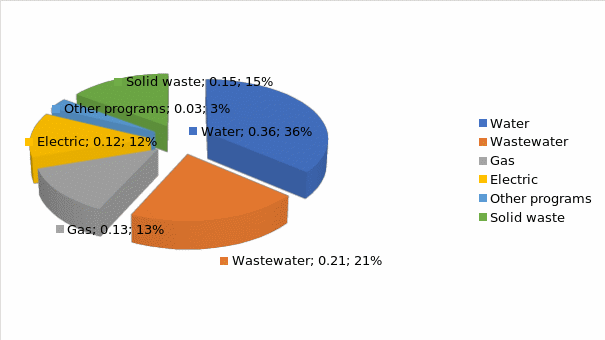
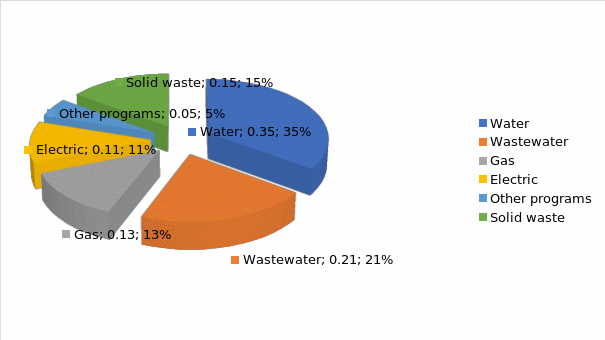
From figure 5 above (which show the revenue from different sources) it can be observed that water, gas, wastewater, electric and solid waste take the largest proportion of resources. Revenue from water and electric decreased by 1% in the fiscal year 2010 when compared with 2009, while revenue from other programs such as Falcon airport, golf courses, district cooling and convention centre have increased by 2%. This increase was as a result of planned expansion of the airport and residential construction activities which were higher in 2009/2010 than in the fiscal year 2008/2009.
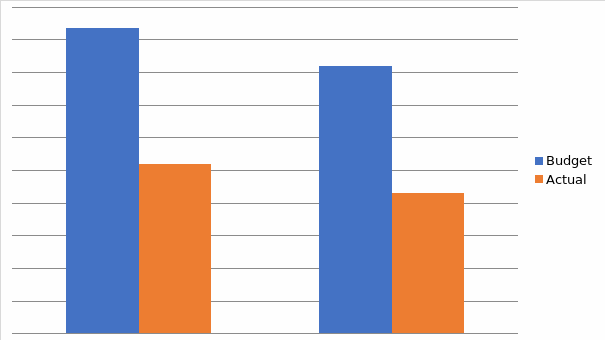
Mesa-Falcon Field Airport budget revenue in the fiscal year 2009/2010 was $9,355,000 and the actual revenue was $5,190,067 thus the variance in the budget was $4,164,933. In the year 2010 the actual revenue collected was $4,287,736 while the adopted budget $8,188,000 thus the varying amount within the budget was $3,900,264. From figure 6 above it can also be seen that the airport projected higher revenues in both fiscal year but due to uncertainty in the economy less revenue was collected (Investorwords, 2009). In 2009 the airport had projected to collect more revenue which was less than what they collected by almost half of the budget which is the reason they had to reduce the budget in the fiscal year 2010.
Financial ratio analysis and observation
Operating expenses ratio
Operating expenses ratio = (Operating expenses/ revenue) * 100% (Liraz, 2008).
Operating expenses ratios indicate the firm ability to control its production and cost of operations so as to generate a given level of revenue (Liraz, 2008). It summarizes the change in the net asset margin for the two years which we can see the operating expenses to be quite high as shown by the ratios when compared to the airport fees and charges collected during the same time. The decrease in operating expenses in the fiscal year 2010 resulted to a decrease in the ratio by 2%.
Net income margin
Net income margin = Net income/ revenue (Liraz, 2008).
Net income margin is a measure of the firm’s ability to control its operating cost and financing cost (Microstrategy, 2011). The airport has been efficient in controlling its operating expense and finance cost as shown by the increase in the net income margin ratio that increased from 15% in 2009 to 17% in the fiscal year 2010 (Messaz.gov, 2009).
Return on capital employed
Return on capital employed =Net income/ net asset employed (Liraz, 2008).
This is a measure of the efficiency with which the firm uses long term funds to generate returns (Drake, 2009). The airport efficiency in relation to the extent to which permanent assets have generated returns has increased from 9% in 2009 to 11% in 2010, a change of 2% this could be as a result of increase in fees and charges in the fiscal year 2010 (Messaz.gov, 2009).
Cash flow
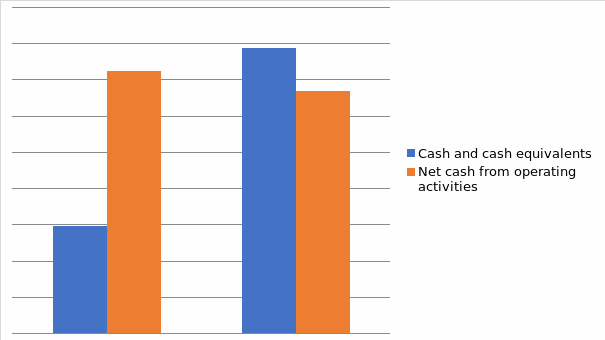
The net cash from the operating activities for the enterprise fund was $142,462,935 in the fiscal year 2009 while in 2010 the cash provided by operating activities were $141,356,275 (Messaz.gov, 2009). This indicate a decrease of 0.78% [($142,462,935 – $ 141,356,275)/ 142,462,935] in the fiscal year 2010. The cash and cash equivalent for the fiscal year 2009 was $ 133,935,430 while in 2010 it was $143,746,249, the lower figure in 2009 may be as a result of more cash expenditure in acquisition and construction of capital assets and investment in joint ventures (Messaz.gov, 2009)..
Conclusion
The expansion of Phoenix Metropolitan Area and City of Mesa will necessitate the expansion of Falcon Field Airport; this means that there will be a positive change in demand as more people populate the area and new businesses open. The expansion of the Falcon Field airport will require more funding both internally and externally; the external funds such as bond issue by the City of Mesa will be utilized, and grants from State of Arizona and Federal government will increasingly be crucial. In general the Mesa-Falcon field Airport is liquid in both fiscal years 2009 and 2010; as such, the cash generated from the operation should be used to fund growth and expansion of runaways and other airport facilities. This will enable the airport to accommodate huge aircraft in the future as more revenue is collected.
References
Federalgrantswire.com. (2011). Federal Aviation Administration Federal Grants. Web.
Liraz, M. (2008) Financial ratio analysis. Web.
Messaz.gov. (2009). Comprehensive Annual Financial Report. Web.
Mesaaz.gov. (2009). Airport Facilities Requirements. Web.
Mesa-Falcon Field Airport (2009). Capital improvement program. Web.
Microstrategy (2011) Financial Analysis. Web.
Pamela P. Drake (2009) Financial ratio analysis. Web.
Scott, S. (2009). Executive Budget plan. Web.